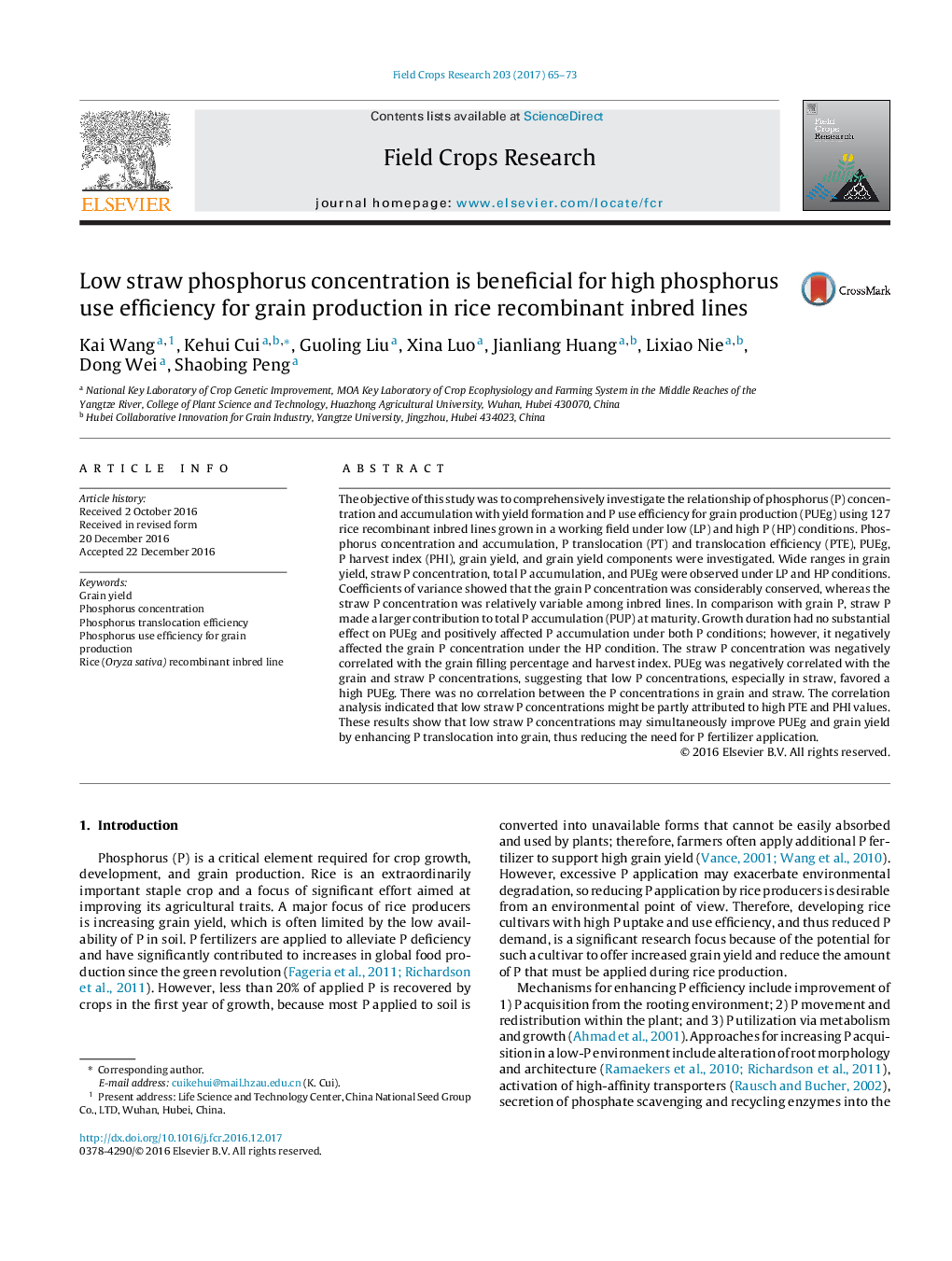| Article ID | Journal | Published Year | Pages | File Type |
|---|---|---|---|---|
| 5761466 | Field Crops Research | 2017 | 9 Pages |
Abstract
The objective of this study was to comprehensively investigate the relationship of phosphorus (P) concentration and accumulation with yield formation and P use efficiency for grain production (PUEg) using 127 rice recombinant inbred lines grown in a working field under low (LP) and high P (HP) conditions. Phosphorus concentration and accumulation, P translocation (PT) and translocation efficiency (PTE), PUEg, P harvest index (PHI), grain yield, and grain yield components were investigated. Wide ranges in grain yield, straw P concentration, total P accumulation, and PUEg were observed under LP and HP conditions. Coefficients of variance showed that the grain P concentration was considerably conserved, whereas the straw P concentration was relatively variable among inbred lines. In comparison with grain P, straw P made a larger contribution to total P accumulation (PUP) at maturity. Growth duration had no substantial effect on PUEg and positively affected P accumulation under both P conditions; however, it negatively affected the grain P concentration under the HP condition. The straw P concentration was negatively correlated with the grain filling percentage and harvest index. PUEg was negatively correlated with the grain and straw P concentrations, suggesting that low P concentrations, especially in straw, favored a high PUEg. There was no correlation between the P concentrations in grain and straw. The correlation analysis indicated that low straw P concentrations might be partly attributed to high PTE and PHI values. These results show that low straw P concentrations may simultaneously improve PUEg and grain yield by enhancing P translocation into grain, thus reducing the need for P fertilizer application.
Keywords
Related Topics
Life Sciences
Agricultural and Biological Sciences
Agronomy and Crop Science
Authors
Kai Wang, Kehui Cui, Guoling Liu, Xina Luo, Jianliang Huang, Lixiao Nie, Dong Wei, Shaobing Peng,
